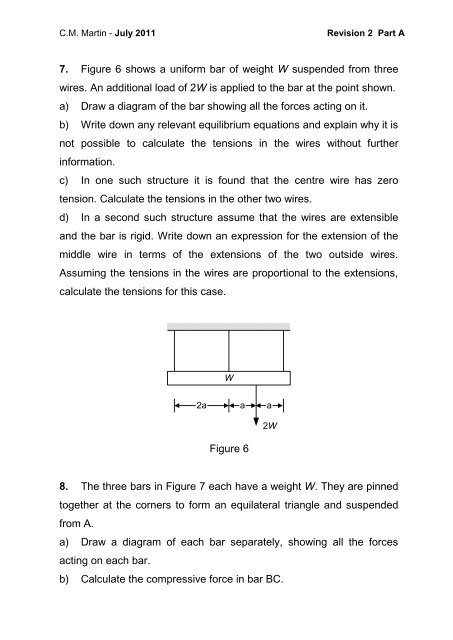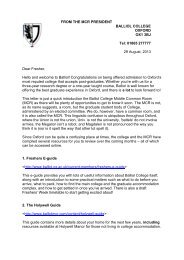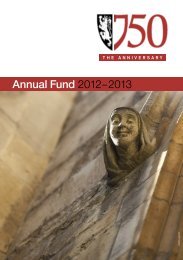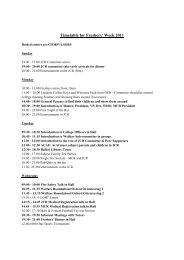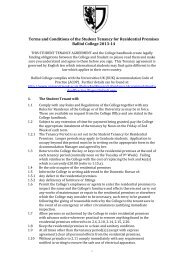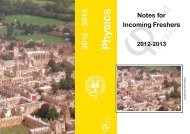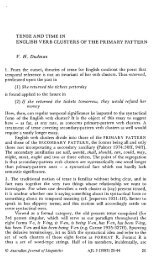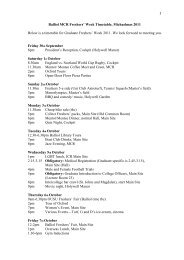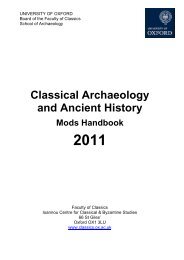x - Balliol College - University of Oxford
x - Balliol College - University of Oxford
x - Balliol College - University of Oxford
Create successful ePaper yourself
Turn your PDF publications into a flip-book with our unique Google optimized e-Paper software.
C.M. Martin - July 2011<br />
Revision 2 Part A<br />
7. Figure 6 shows a uniform bar <strong>of</strong> weight W suspended from three<br />
wires. An additional load <strong>of</strong> 2W is applied to the bar at the point shown.<br />
a) Draw a diagram <strong>of</strong> the bar showing all the forces acting on it.<br />
b) Write down any relevant equilibrium equations and explain why it is<br />
not possible to calculate the tensions in the wires without further<br />
information.<br />
c) In one such structure it is found that the centre wire has zero<br />
tension. Calculate the tensions in the other two wires.<br />
d) In a second such structure assume that the wires are extensible<br />
and the bar is rigid. Write down an expression for the extension <strong>of</strong> the<br />
middle wire in terms <strong>of</strong> the extensions <strong>of</strong> the two outside wires.<br />
Assuming the tensions in the wires are proportional to the extensions,<br />
calculate the tensions for this case.<br />
W<br />
2a a a<br />
Figure 6<br />
2W<br />
8. The three bars in Figure 7 each have a weight W. They are pinned<br />
together at the corners to form an equilateral triangle and suspended<br />
from A.<br />
a) Draw a diagram <strong>of</strong> each bar separately, showing all the forces<br />
acting on each bar.<br />
b) Calculate the compressive force in bar BC.


